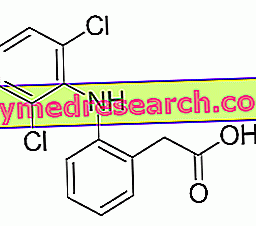
Information about Melatonin 5 mg - Natroid
Melatonin 5 mg- Natroid
Food supplement based on Melatonin and vitamin B6
FORMAT
Pack of 100 tablets
COMPOSITION
cellulose; dicalcium phosphate (E341); filming agent; hypromellose (E464); magnesium stearate (E572); stearic acid (E570); silicon dioxide (E551); methylcellulose (E461), glycerol (E422), pyridoxine hydrochloride and melatonin.
FOR CAPSULES: Melatonin 5 mg; Vitamin B6 3 mg
Product features Melatonin 5 mg - Natroid
Melatonin: neurohormone produced by the pineal gland, located at a diencephalic level, which exerts its biological action by recognizing activating MT receptors, disseminated along the central nervous system and particularly concentrated at the hypothalamic level. In nature, melatonin is not present exclusively in animal organisms, but is also found in different plants, such as cocoa and rice, from which we proceed with the extraction for commercial purposes. The sources of alimentary melatonin, however, are not able to significantly increase the plasma levels of this molecule, whose concentration fluctuates between 10 and 300 pg / ml; for this reason, for the purposes of proper supplementation it is necessary to use supplements.
Endogenous synthesis : the synthesis of melatonin is carried out at the level of the pineal gland, starting from the tryptophan through the enzyme serotonin N acetyl transferase. The maximum production peak is realized during the night period, when the light, through molecular mechanisms that are not entirely clear, but which involve the participation of photoceptors and AMPc, is able to inactivate the enzyme serotonin acetyl transferase. The aging of the epiphysis, characterized by diffuse calcification and a nervous desensitization, leads to a gradual decrease in its biosynthetic capacity.
Kinetics: melatonin taken orally passes unaltered in the intestine, where it is almost completely absorbed (in the elderly absorption levels fall by 50%) and transported to the liver. The first-pass metabolism determines the conversion of approximately 90% of the total intake, into 6 sulfatoxy melatonin, an inactive metabolite eliminated at the renal level. The bioavailable portion determines a maximum plasma peak after about 3 hours, although this is profoundly influenced by the state of gastric repletion (stomach dilation).
Functionality : melatonin is mainly involved in the regulation of biological rhythms. In fact, its hypnotic and sedating action, which is manifested through the activation of MT receptors, concentrated predominantly at the hypothalamic level, is able to facilitate sleep and restorative rest. Besides the classic role, moreover, melatonin is directly involved:
- In the protective action against reactive oxygen and nitrogen species;
- in strengthening the immune system;
- in carbohydrate metabolism;
- in the protection and prevention of damage to nucleic acids.
Role of the integrator : the melatonin integrator is effectively used both in all syndromes characterized by sleep disorders (work shifts, jet-lag) and in the prevention of epiphysial degeneration. Several studies have shown that supplementation with melatonin can reduce the functional exhaustion of the pineal gland, and preserve its functionality for longer. Moreover, several researchers are evaluating other applications for metabolic pathologies, endocrine disorders and neurodegenerative diseases.
In sports practice: although not widely used in sports, melatonin seems to be able to support the athlete's body especially during the most intense workouts:
- avoiding the decrease in immune defenses that occurs after overtraining;
- directly supporting the body's antioxidant capacity;
- improving hormonal function: studies show a significant increase in the night secretion of growth hormone;
- reducing body temperature during intense workouts performed in warm environments.
Despite this, there is a lack of data showing a significant improvement in performance or body composition.
Vitamin B6: also known as pyridoxine, it is a pyridine derivative introduced mainly through meat, absorbed at fasting level after dependent ATP hydrolysis and transported to the liver bound to albumin. Here it is transformed into pyridosamine and then into pyridoxal and subsequently phosphorylated, with consequent activation and storage. From the liver it will be transported to various tissues, where it can play its biological role, as a cofactor:
- Increases blood glucose levels: it favors glycogenolysis and gluconegoesis;
- Promotes the synthesis of neurotransmitters such as serotonin, dopamine, norepinephrine and GABA.
- Leads the synthesis of the EME group, necessary for hemoglobin to bind oxygen;
- It allows the synthesis of niacin, starting from tryptophan;
- Modulates hormonal action;
Vitamin B6 is used in the treatment of numerous pathologies, with particular importance for those neurodegenerative, cardiovascular and in immune disorders.
Its daily requirement is around 1 / 1.5 mg, but even in this case the deficient episodes are very rare.
Vitamin B6 and melatonin: although not all studies seem to agree, vitamin B6 was effective in enhancing the synthesis of melatonin, so that pyridoxine deficiencies inevitably affect the plasma levels of this hormone. In addition to the direct role towards synthesis, this synergy could also be advantageous for the control of many common metabolic and functional pathways.
Recommended use by company - Melatonin 5 mg - Natroid
Take a tablet in the evening 20 minutes before bedtime.
Use in sports Melatonin 5 mg - Natroid
Studies conducted on healthy individuals subjected to physical exercise generally use very different dosages. In fact, it seems that an effect, in terms of improving hormonal balance, can be had both at low concentrations (0.3 / 0.5 mg) and at higher concentrations 3/5 mg.
In both cases, however, it is necessary to take melatonin before going to bed, so as to reproduce and improve the endogenous production of the hormone, without causing an upset of the delicate circadian and ultradian rhythms.
Synergy - Melatonin 5 mg - Natroid
Several studies seem to agree on the greater efficacy of synergy when taken together with zinc. A generalized improvement is obtained both on the strengthening of the immune defenses, on the antioxidant effect and on the metabolic aspect, improving insulin sensitivity.
Side effects Melatonin 5 mg - Natroid
Although recent studies have confirmed the high tolerability and safety of the active ingredient, there are cases in literature in which, even at a dose of 3 mg / day, nausea, irritability, nightmares and vascular changes have been observed.
Furthermore, acting as a mild hypnotic and sedative, melatonin may interfere with concentration. By enhancing the immune response, the substance could also worsen the condition of patients suffering from allergic or autoimmune diseases.
Precautions for use Melatonin 5 mg - Natroid
The product is contraindicated in cases of renal or hepatic disease, cardiovascular disease and / or hypertension, allergies and autoimmune diseases, during pregnancy, during breastfeeding, under 12 years and for adolescents not yet trained.
In the event of prolonged use (over 6/8 weeks), medical advice is required.
This article, elaborated on the critical re-reading of scientific articles, university texts and common practice, is for informational purposes only and is therefore not a medical prescription. It is therefore always necessary to consult your doctor, nutritionist or pharmacist before starting to use any kind of supplement . Further information on the critical analysis of Melatonin 5 mg - Natroid.
| BIBLIOGRAPHY |
Neuro Endocrinol Lett. 2002 Jun; 23 (3): 213-7. The effect of pyridoxine administration on melatonin secretion in normal men.Luboshitzky R, Ophir U, Ship R, Epstein R, Shen-Orr Z, Herer P. Georgian Med News. 2007 Dec; (153): 35-8. [Pyridoxine (vitamin B6) influence on endogenic melatonin production during the experiment]rsling M, Wheeling M, Williams A. The effect of melatonin administration on pituitary hormone secretion in man. Clin Endocrinol. 1999; 51: 637-42. doi: 10.1046 / j.1365-2265.1999 Melatonin supplementation to rats subjected to acute swimming exercise: effect on plasma levels and relation with zinc. Kaya O, Gokdemir K, Kilic M, Baltaci AK. Neuro Endocrinol Lett. 2006 Feb-Apr; 27 (1-2): 263-6. Effects of a single dose of N-Acetyl-5-methoxytryptamine (Melatonin) and resistance exercise on the growth hormone / IGF-1 axis in young males and females. Nassar E, Mulligan C, Taylor L, Kerksick C, Galbreath M, Greenwood M, Kreider R, Willoughby DS. Effects of melatonin supplementation on exercise-induced changes in conduction velocity distributions. Ayaz M, Okudan N. Improvement of the conductive capacities of the nerve fibers. Melatonin: aeromedical, toxicopharmacological, and analytical aspects. Sanders DC, Chaturvedi AK, Hordinsky JR. J Anal Toxicol. 1999 May-Jun; 23 (3): 159-67. Review. BMJ. 2006 Feb 18; 332 (7538): 385-93. Epub 2006 Feb 10. Efficacy and safety of exogenous melatonin for secondary sleep disorders and sleep disorders accompanying sleep restriction: meta-analysis.Buscemi N, Vandermeer B, Hooton N, Pandya R, Tjosvold L, Hartling L, Vohra S, Klassen TP, Baker G. Safe in the short term Pharmacokinetics of orally administered melatonin in critically ill patients. Mistraletti G, Sabbatini G, Taverna M, Figini MA, Umbrello M, Magni P, Ruscica M, Dozio E, Exposed R, DeMartini G, Fraschini F, Rezzani R, Reiter RJ, Iapichino G. J Pineal Res. 2010 Mar; 48 (2): 142-7. Epub 2010 Jan 8. Significance and application of melatonin in the regulation of brown adipose tissue metabolism: relation to human obesity. Tan DX, Manchester LC, Fuentes-Broto L, Paredes SD, Reiter RJ. Obes Rev. 2010 Jun 16. [Epub ahead of print] Obesity (Silver Spring). 2010 Feb 18. [Epub ahead of print] Contreras-Alcantara S, Baba K, Tosini G. Endocrinology. 2009 Dec; 150 (12): 5311-7. Epub 2009 Oct 9. Melatonin improves glucose homeostasis and endothelial vascular function in high-fat diet-fed insulin-resistant mice.Sartori C, Dessen P, Mathieu C, Monney A, Bloch J, Nicod P, Scherrer U, Duplain H. Int J Exp Pathol. 2007 Feb; 88 (1): 19-29. Intake of melatonin is associated with amelioration of physiological changes, both metabolic and morphological pathologies associated with obesity: an animal model.Hussein MR, Ahmed OG, Hassan AF, Ahmed MA. Endocrinology. 2003 Dec; 144 (12): 5347-52. Epub 2003 Sep 11. Melatonin reduces body weight gain in Sprague Dawley rats with diet-induced obesity.Prunet-Marcassus B, Desbazeille M, Bros A, Louche K, Delagrange P, Renard P, Casteilla L, Pénicaud L. Saudi Med J. 2006 Oct; 27 (10): 1483-8. Hussain SA, Khadim HM, Khalaf BH, Ismail SH, Hussein KI, Sahib AS. Eur J Appl Physiol. 2006 Apr; 96 (6): 729-39. Epub 2006 Feb 28. Effects of resistance exercise session after oral ingestion of melatonin on physiological and performance responses of adult men.Mero AA, Vähälummukka M, Hulmi JJ, Kallio P, von Wright A. J Pineal Res. 2005 Nov; 39 (4): 353-9. Effects of melatonin on the thermoregulatory responses to intermittent exercise.Atkinson G, Holder A, Robertson C, Gant N, Drust B, Reilly T, Waterhouse J. Ergonomics. 2005 Sep 15-Nov 15; 48 (11-14): 1512-22. Effects of daytime ingestion of melatonin on short-term athletic performance.Atkinson G, Jones H, Edwards BJ, Waterhouse JM. J Pineal Res. 2007 Jan; 42 (1): 28-42. Tan DX, Manchester LC, Terron MP, Flores LJ, Reiter RJ. J Pineal Res. 2009 Sep; 47 (2): 184-91. Epub 2009 Jul 13. Melatonin reduces cardiac inflammatory injury induced by acute exercise.Veneroso C, Tuñón MJ, González-Gallego J, Collado PS. Saudi Med J. 2006 Oct; 27 (10): 1483-8. Effects of melatonin and zinc on glycemic control in type 2 diabetic patients poorly controlled with metformin.Hussain SA, Khadim HM, Khalaf BH, Ismail SH, Hussein KI, Sahib AS. |



